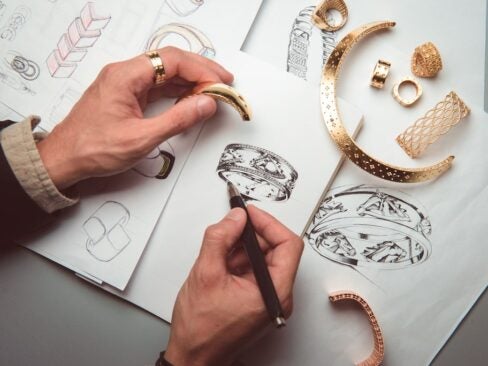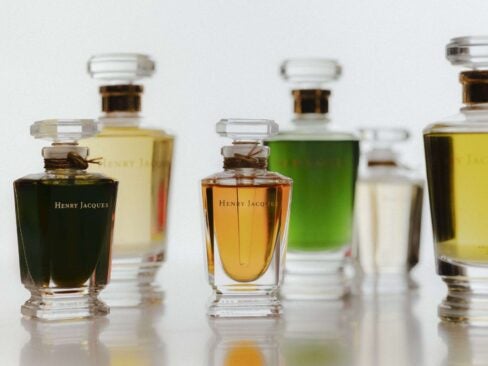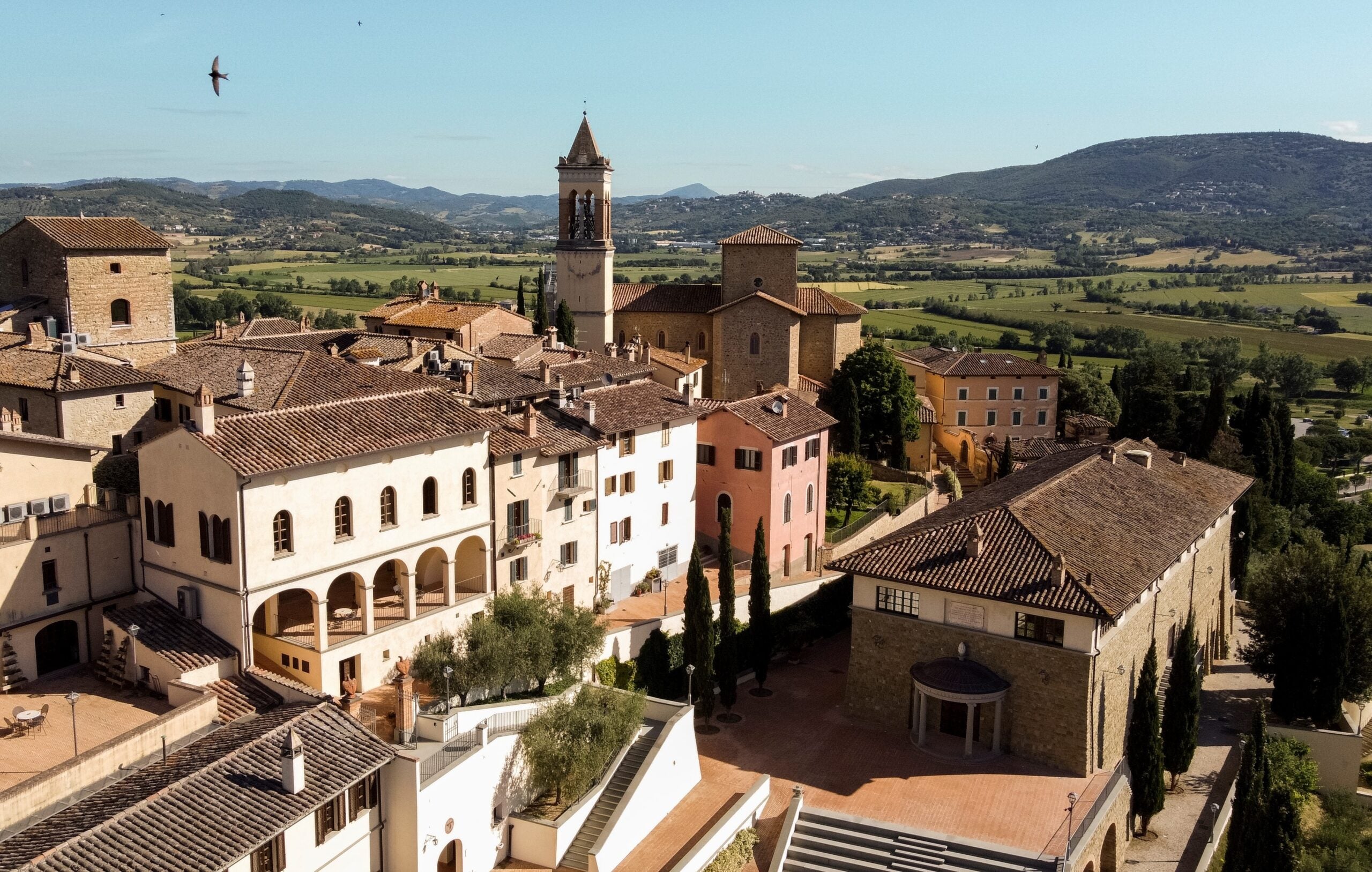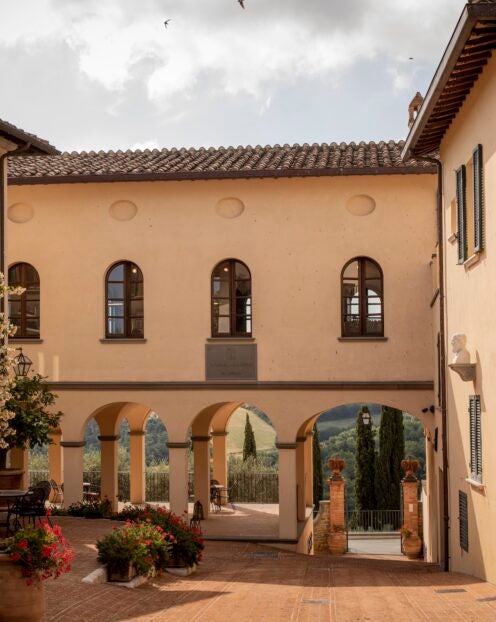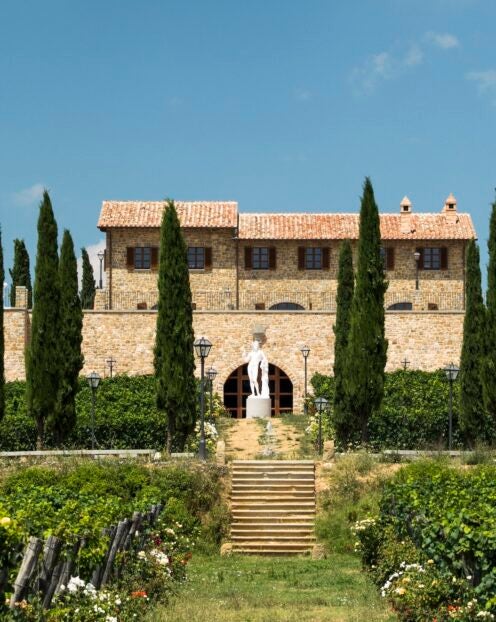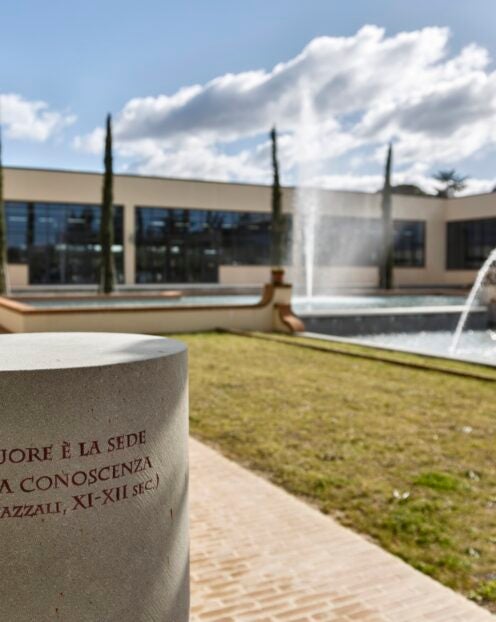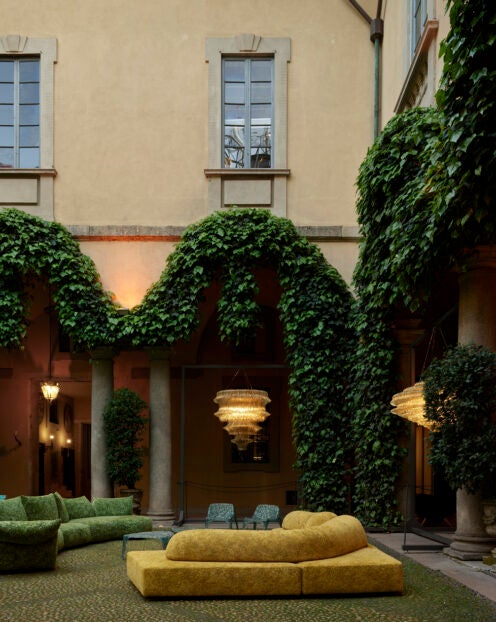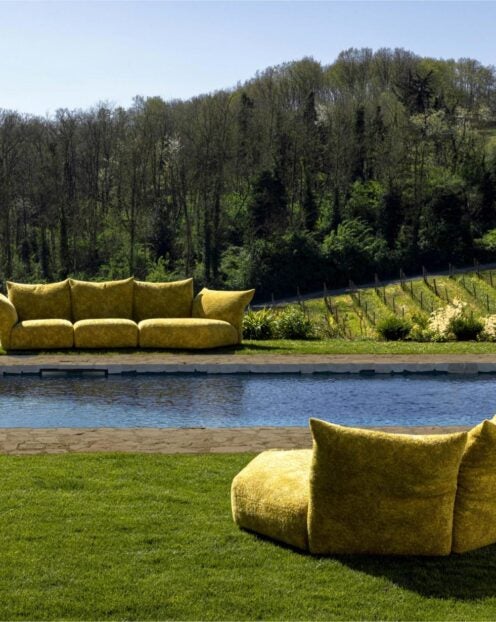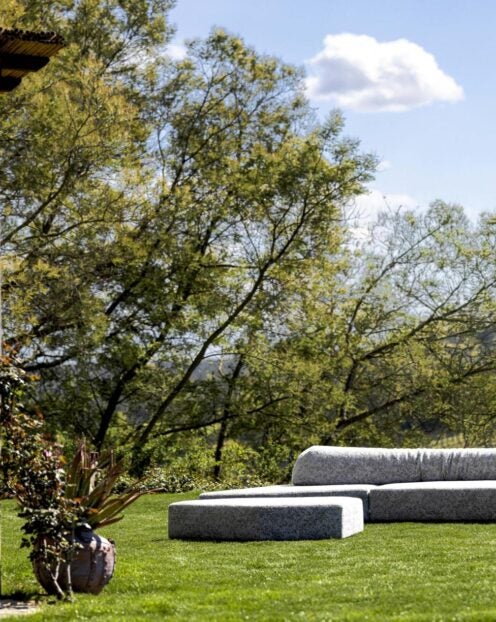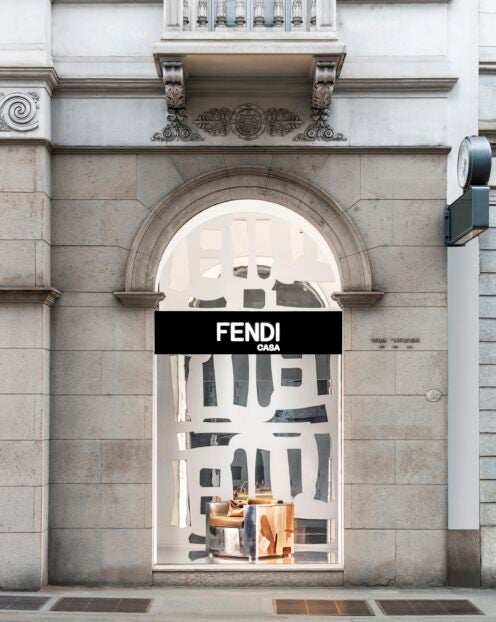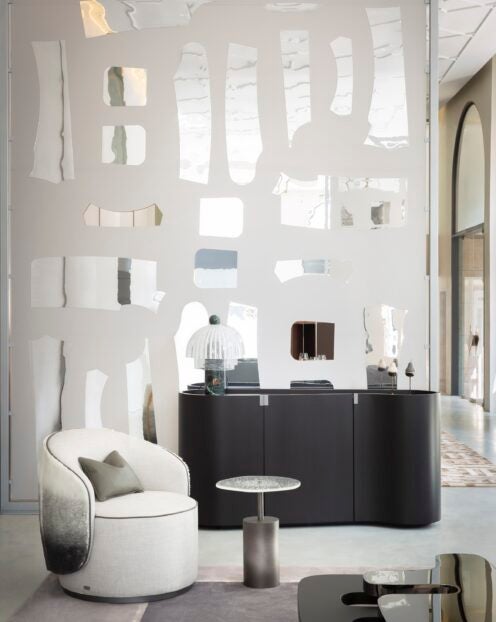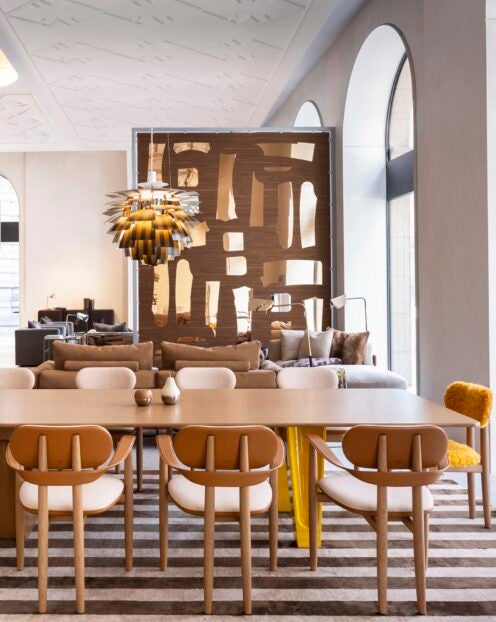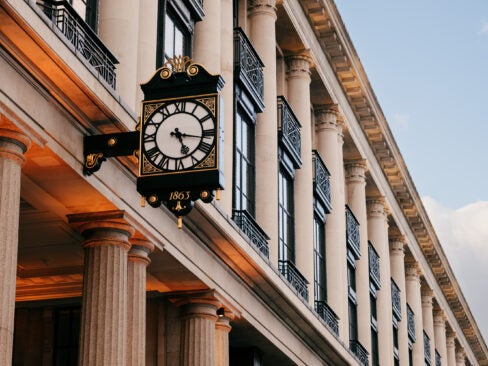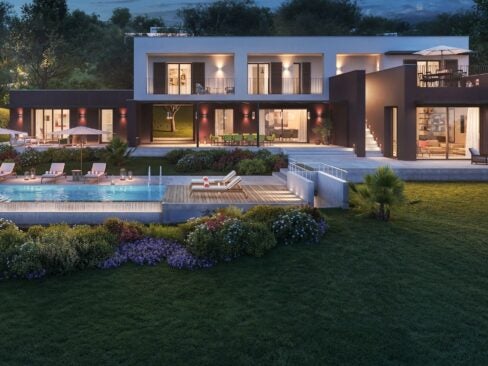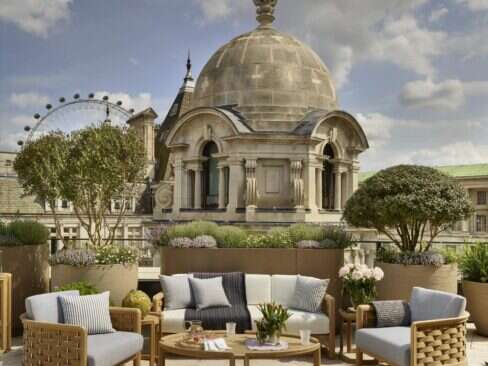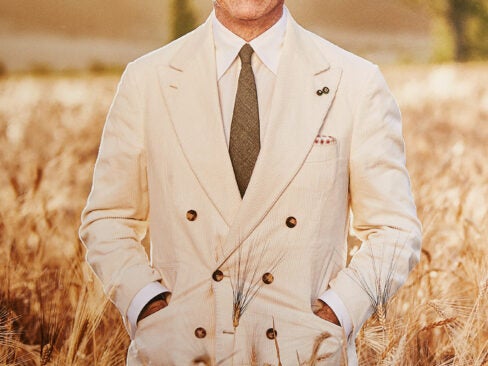
Sometimes the most powerful inspiration lies close to home. From drawing inspiration from the landscapes of their birthplace to hometowns that anchor production, a growing number of designers are reconnecting with their roots – not only to influence the look and feel of their work, but to invest in the places that shaped them.
Through architecture, material and craftsmanship, we take a closer look at the brands using the local as a lens for creating something enduring.
Brunello Cucinelli
For Brunello Cucinelli, executive chairman and creative director of the eponymous fashion houseof his eponymous fashion house, the restoration of Solomeo is a deeply personal act – far more than simply establishing a company headquarters. The medieval village, nestled in the Umbrian hills, is the birthplace of his wife and the place where they first met. It is now also the home of his multigenerational family. But, as he puts it, it’s much more than that: “This is the place of my soul. I want to be buried here in Solomeo.”
Since the 1980s, Cucinelli has overseen the thoughtful restoration of Solomeo, a project rooted in a belief that architecture, like craftsmanship, must serve the dignity of humanity. Here, he has expanded his company’s operations, while also building a theater and a library, among many other projects, laying the foundation for a slower, more soulful vision of luxury: one meant to last not only a season, but for centuries.
From rebuilding residents’ stone houses to planting vineyards and olive groves, establishing craftsmanship schools and repairing churches, the restoration of the Solomeo is more than heritage preservation. It’s a spiritual and economic investment in the future, a mission to ensure the dignity, culture and beauty of his home survives long after his lifetime.

Knitwear, the foundation of his fashion house, is as rooted in the local tradition as the stone architecture of Solomeo – centuries-old and profoundly local. “I come from a region where knitwear has always enjoyed a century-old heritage or history,” Cucinelli says. “That is why I want to stay here and donate to that culture, through knitwear.” For him, clothing is not just inspired by the culture of his homeland, but an active way of giving back to it: culturally, economically and spiritually.
“I’m an Italian businessman, and my enterprise will never be owned by anyone other than an Italian,” he says. “But most of all, I want to pay my taxes and use them towards the Italian government.” This commitment to cultural continuity has become a blueprint for how ethics, aesthetics and enterprise can coexist. In 2025, the Department of Architecture at the University of Campania Luigi Vanvitelli awarded Cucinelli with the honorary doctorate, Design for Made in Italy: Identity, Innovation, and Sustainability.
Like the connotations of a clothing label, ‘Made in Italy’ signifies beauty, craftsmanship and pride. Through his stewardship of Solomeo, Cucinelli gives form to that ideal, materialising it into stone, thread and soil.
[You can read the full interview with Brunello Cucinelli here]
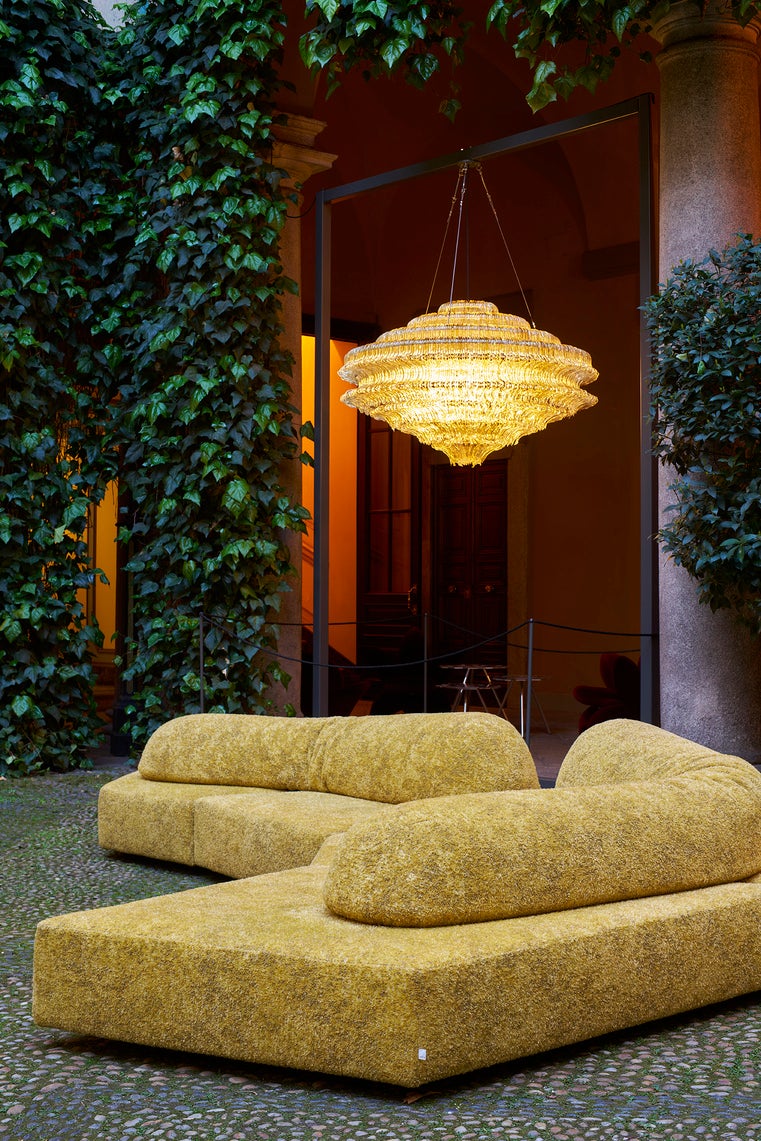
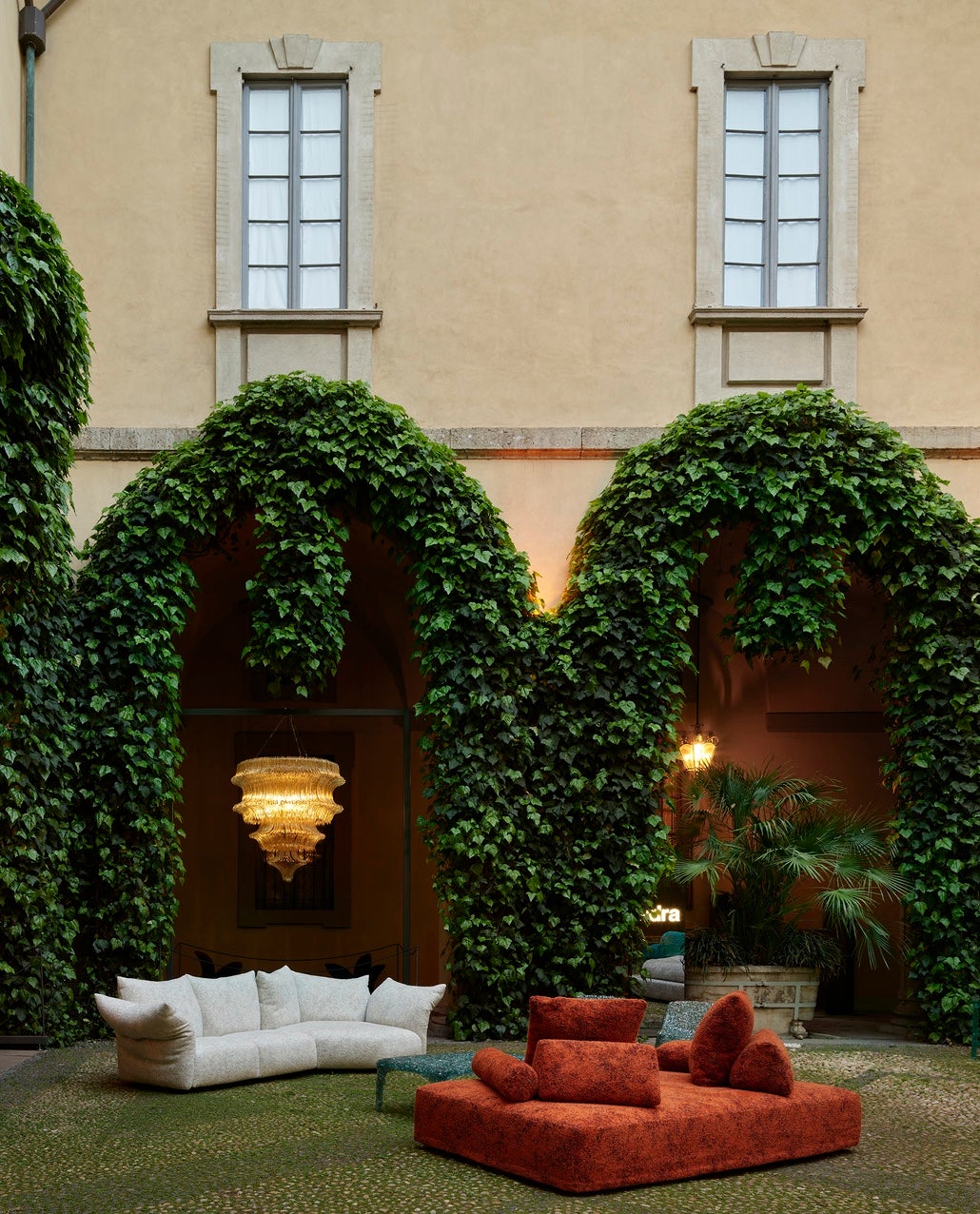
Edra
Tucked into the Tuscan village of Perignano, innovative furniture designer Edra has not-so-quietly rewritten the rules of Italian design since its founding in 1987. Founded by the Mazzei family, whose background lies in traditional woodworking, the brand has always stood apart from Italy’s mainstream furniture districts. Its approach is instinctive rather than conventional, shaped by experimentation, collaboration and a strong sense of place.
Edra’s designs are as much about emotional resonance as they are about aesthetic form. From its earliest collections, the brand has reimagined domestic space through pieces that feel custom-made for both body and environment. Its commitment to craftsmanship, combined with advanced material technologies, has led to iconic designs that balance softness with sculptural presence. Each piece is still made in Tuscany, maintaining the integrity of its origins while embracing a globally influential vision.
The latest outdoor collection, Every Stone, reflects this philosophy. Inspired by Italy’s stone heritage – and most notably by Carrara marble, which is quarried in the nearby northern Tuscan mountains – the collection recreates these materials’ depth and luminosity in richly tactile fabrics. Designed to withstand the elements but elegant enough for interiors, the materials are offered in conjunction with Edra’s most emblematic pieces, including On the Rocks, Standard, and Sherazade. The result is a tactile tribute to nature’s durability, translated into the language of comfort and contemporary living.
Edra’s home remains Tuscany, and so does its production — a conscious choice that ties every creation back to its roots. Through each collection, it reaffirms that design is not just about objects, but about the ongoing conversation between material, memory and the spaces we inhabit.
Home-grown Designs
Fendi Casa
Fendi Casa marks a century of Roman heritage with a collection that bridges the past and the future. Founded in 1925 and first launching its home line in 1987, Fendi was among the earliest luxury houses to treat interior design as an extension of fashion. This year’s offering, which debuted at Milan Design Week 2025, reflects that pioneering spirit, drawing from the brand’s strongest visual eras to create pieces that feel at once archival and entirely new.
Evoking the rich tactile warmth of the 1970s — with woods, leathers and bamboo — and contrasting with the sleek metallic tones of the 1990s, the materials of the 2025 collection tell a story of contrasts: tradition meeting the modern, bold geometry with refined craftsmanship. Collaborating with Italy’s finest furniture ateliers, Fendi Casa crafts pieces that carry the house’s DNA but through a distinctly Roman lens.
At the heart of the collection lies Fendi’s headquarters, the Palazzo della Civiltà Italiana. Known as the “Square Colosseum” for its dramatic symmetry and striking, scalloped arches, the building sets a standard for design that’s both enduring and forward-looking. The architecture serves as a muse for the house’s latest collection, translating its bold forms into furnishings that reimagine the building’s timeless appeal.
The Later sofa by Ceriani Szostak takes inspiration from the Palazzo’s rigid lines but softens them with cocooning curves for comfort. The Lunar dining table by Jonas Van Put mirrors the arches with half-moon legs, creating a visual rhythm. The Twist chair and Efo tables subtly reflect Fendi’s tailoring legacy – their silhouettes softened, sculpted, or cinched, and the FF motif appearing in quiet, abstracted forms: hammered into glass, curved into wood.
Fendi Casa’s 2025 collection is a celebration of craftsmanship, heritage, and place, embodying the essence of Fendi’s Roman roots while looking boldly to the future. As a century closes, this collection marks a refined tribute to the enduring power of place, recognising the beauty of returning to where it all began.
MASS Beverly is the official Los Angeles retailer of Fendi Casa.


